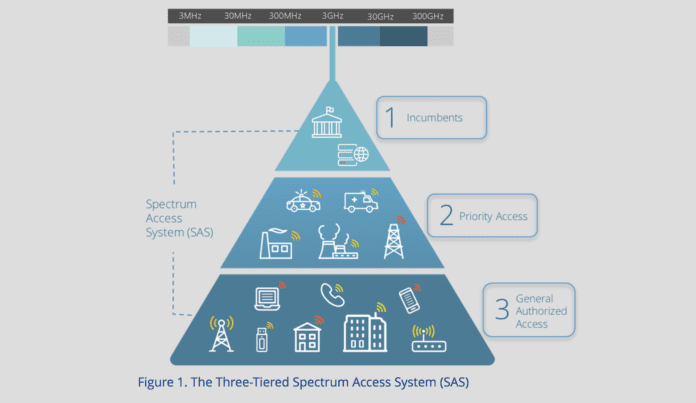Non-carrier interests push FCC for parity in access to CBRS spectrum
In the U.S. mobile operators aren’t the only businesses who can make beneficial use of spectrum. For operators tasked with delivering more and more capacity to keep up with consumer usage, more spectrum is key component of bolstering network performance. For industrial players looking to implement internet of things solutions, private networks could serve as a key component of digital transformation strategies. As the Federal Communications Commission considers how to make the 3.5 GHz Citizens Broadband Radio Service (CBRS) band available for shared access, two new coalitions are pushing for rules that don’t leave behind industrial companies and small, largely rural, service providers.
Based on a review of recent filings with the FCC, two new coalitions, the Industrial Internet of Things Coalition and CBRS Coalition, are pushing policymakers for compromise rules that support a wide range of CBRS use cases beyond voice and data.
The IIoT Coalition comprises Edison Electric Institute, Enterprise Wireless Association, GE, pdvWireless, the Port of Los Angeles, Southern Linc, Pacific Union and the Utilities Technology Council. The CBRS Coalition is made up of Cox Communications, Edison Electric Institute, Enterprise Wireless Alliance, Exelon Corporation, FedEx, Frontier Communications, GE, Motorola, National Rural Electric Cooperative Association, National Rural Telecommunications Cooperative, the Rural Broadband Association, pdvWireless, the Port of Los Angeles, Rural Wireless Association, Southern Linc, Transit Wireless, Union Pacific, Utilities Technology Council, Windstream Holdings and the Wireless Internet Service Providers Association.
The overlapping member companies, GE, the Port of Los Angeles, for instance, highlight the industrial-facing benefits shared access to 3.5 GHz spectrum could enable. GE runs massive manufacturing operations that, to some degree, led to the creation of industrial IoT specialist GE Digital, which helps other industrial outfits adopt IoT, cloud computing, data analytics and other efficiency-producing technologies. The Port of Los Angeles runs a huge terminal complex wherein cargo, ships and other asset movements need to be monitored, recorded and managed.
As it relates to CBRS, the FCC is considering a three-tiered spectrum access system that protects incumbent users while opening up priority access and general access licenses. The spectrum access system would prioritize spectral access based on the level of access each type of license affords. Open items are the length of licensure term and geographic area associated with the license, Census tracts versus much larger Partial Economic Areas. At a high-level, longer licensure terms and larger licensure areas would favor national mobile operators.
The IIoT Coalition, in an April letter to the FCC, makes an appeal based on “national and homeland security.” The group writes that licensing rules “that give industrial and critical-infrastructure entities a reasonable opportunity to compete for, acquire, and use CBRS spectrum to self-provision private wireless networks that support robust industrial internet of things applications and services. The IIoT Coalition believes that industrial and critical-infrastructure operators are best positioned to evaluate their operational security needs and the necessary response to the growing threat of cyber intrusions by foreign and domestic hackers. Industrial and critical-infrastructure entities will be able to design and deploy IIoT networks that will ensure the safety, security, resilience… at their essential facilities.”
This approach emphasizing the security aspects of wireless networks could appeal to an FCC that has recently been involved in larger political machinations that have seen Chinese network infrastructure and handset vendor Huawei increasingly locked out of the U.S. market based on security concerns.
The CBRS Coalition, in a May 9 letter to the FCC, laid out a four-point compromise framework that addresses licensure term and area. From that correspondence:
- “In every U.S. county, there will be five county-based CBRS PALs [priority access licenses] available at auction.
- In every census tract in every U.S. county, there will be two census tract-based PALs available at auction.
- The license term for all PALs will be seven years.
- PALs will be renewable based on performance criteria.”
This framework, the CBRS Coalition said, is a win-win for operators and all the other stakeholders. “The availability of five county-based licenses in every U.S. county will meet the business and operational requirements of commercial mobile wireless carriers, cable companies, and other broadband providers serving rural areas that desire larger license areas. The availability of two census-tract licenses nationwide, meanwhile, is essential to meeting the minimum spectrum needs for a wide variety of industrial and critical-infrastructure entities, broadband operators serving rural areas, enterprise solution providers, commercial real estate interests, and other parties with geographically-targeted CBRS deployment plans.”

